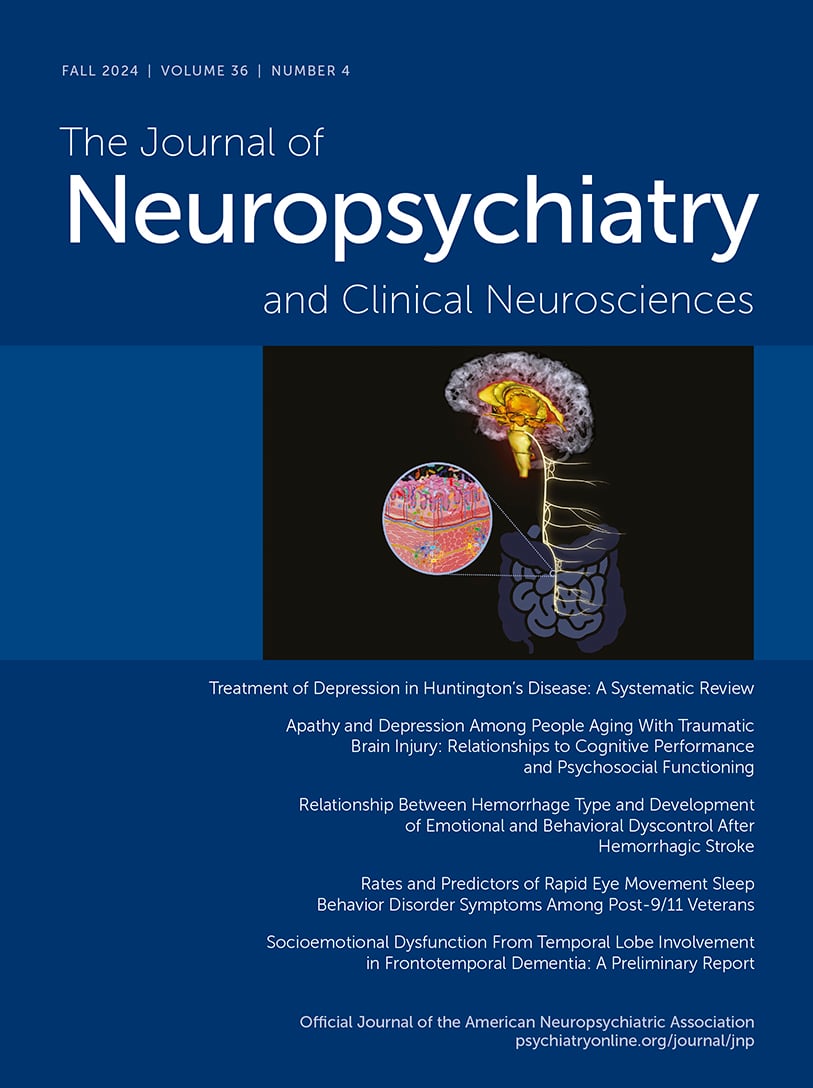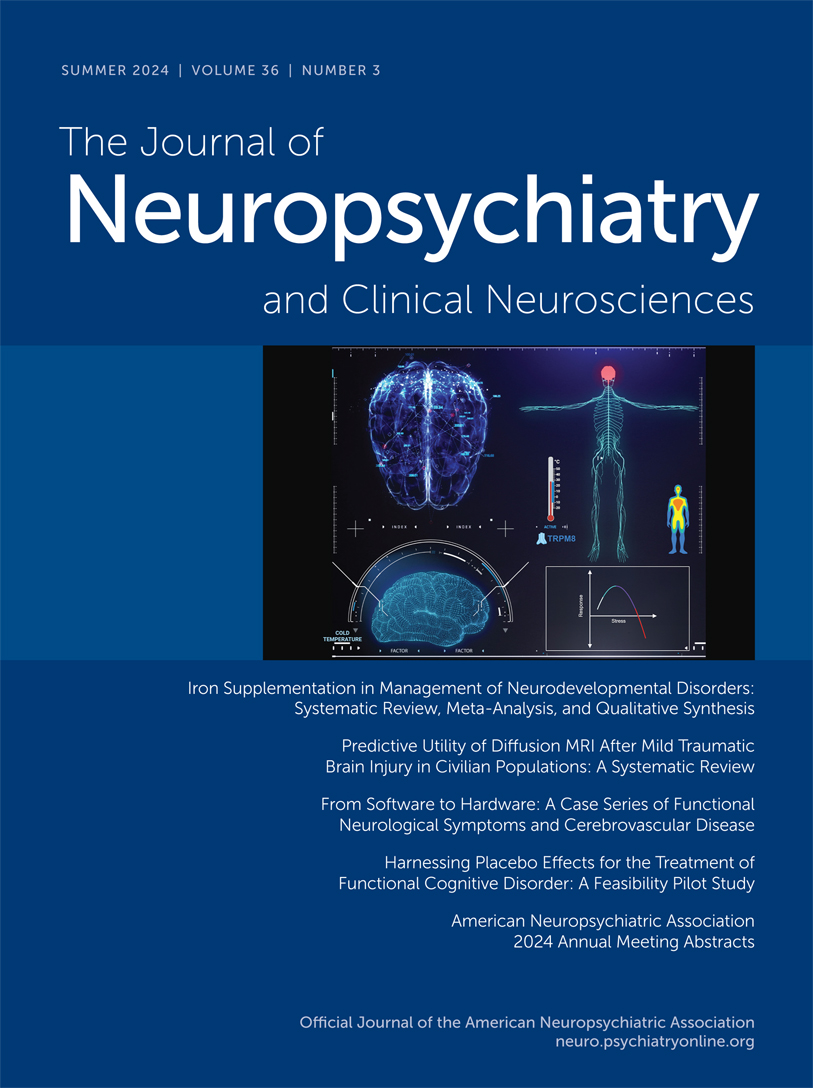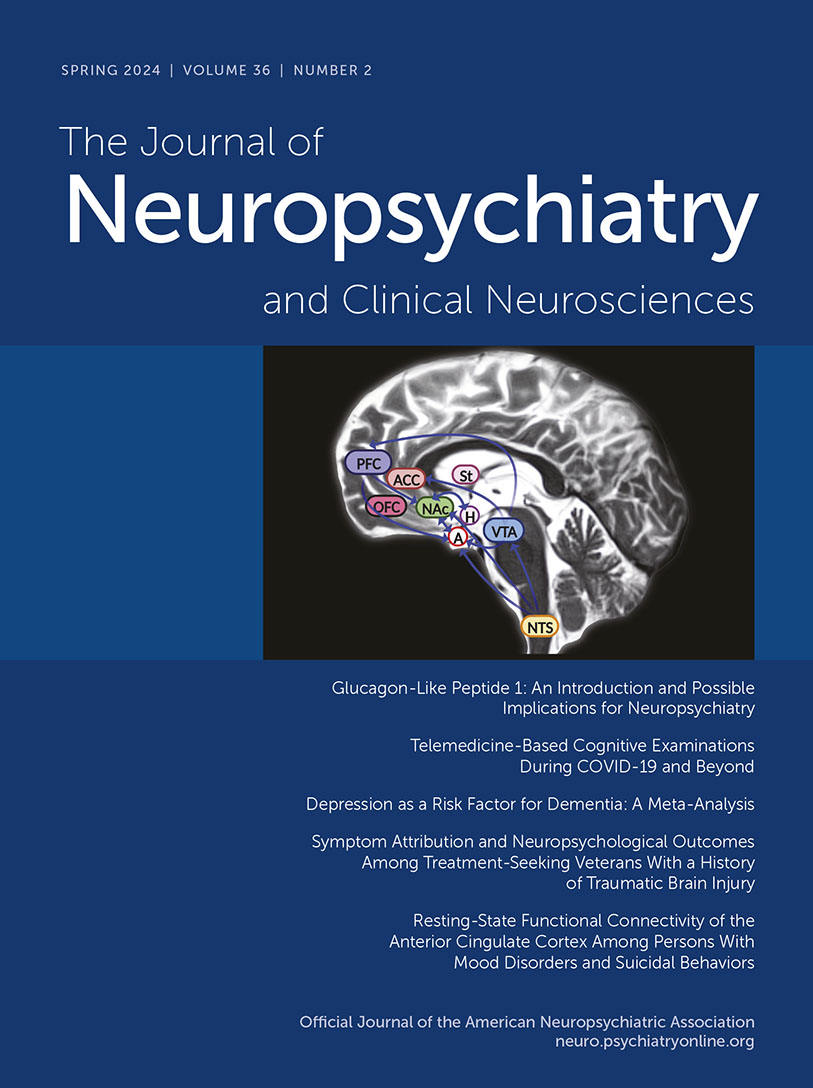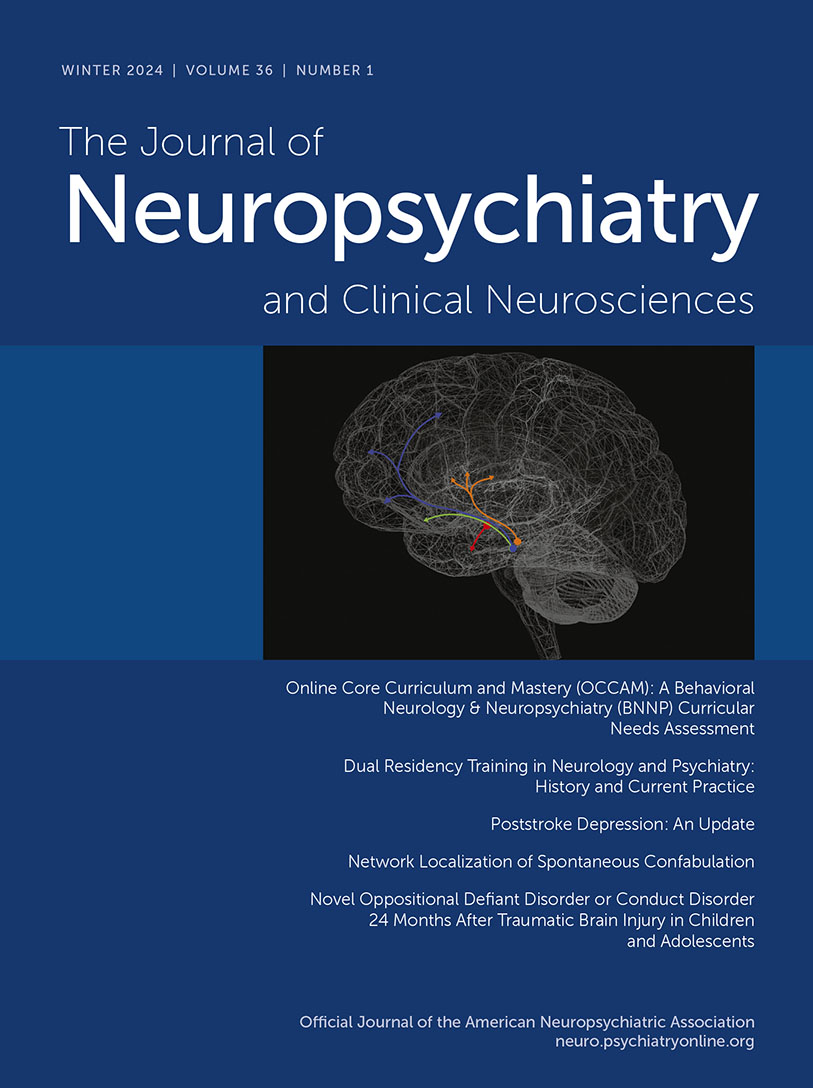The Journal of Neuropsychiatry and Clinical Neurosciences
- Volume 29
- Number 2
- April 2017
Windows to the Brain
Editorials
Special Articles
Publication date: 07 March 2017
Pages86–94Differences in political ideology are a major source of human disagreement and conflict. There is increasing evidence that neurobiological mechanisms mediate individual differences in political ideology through effects on a conservative-liberal axis. This ...
https://doi.org/10.1176/appi.neuropsych.16030051Publication date: 25 January 2017
Pages95–104Motor and vocal tics are relatively common motor manifestations identified as the core features of Tourette’s syndrome (TS). Although traditional descriptions have focused on objective phenomenological observations, such as anatomical location, number and ...
https://doi.org/10.1176/appi.neuropsych.16070141Publication date: 15 March 2017
Pages105–118Non-invasive brain stimulation (NIBS) might be a new approach to treat substance use disorders (SUD). A systematic review and critical analysis was performed to identify potential therapeutic effects of NIBS on addictions. A search of the Medline database ...
https://doi.org/10.1176/appi.neuropsych.16080147Regular Articles
Publication date: 30 November 2016
Pages119–127The authors explored the relations between clinical/demographic characteristics and performance on a neuropsychological battery (eight tests) in a cohort (N=46) of multiple sclerosis (MS) subjects. Findings resulted from a secondary analysis of a study ...
https://doi.org/10.1176/appi.neuropsych.16040083Publication date: 30 November 2016
Pages128–134Neurological and psychological symptoms in multiple sclerosis can affect cognitive function. The objective of this study was to explore the relationship between psychological measures and cognitive performance in a patient cohort. In 322 multiple ...
https://doi.org/10.1176/appi.neuropsych.16050085Publication date: 06 October 2016
Pages135–141This study examined the contribution of depression to reduced executive functioning in temporal lobe epilepsy (TLE) using three groups: TLE only (TLE; N=29), TLE+depression (TLE+DEP) (N=22), and nonneurologic participants with depression (DEP; N=31). ...
https://doi.org/10.1176/appi.neuropsych.16040064Publication date: 17 November 2016
Pages142–147An association between Parkinson’s disease (PD) and brain-derived neurotrophic factor (BDNF) was suggested by several studies, with contradictory results. BDNF is necessary for the survival of dopaminergic neurons in substantia nigra. Val66Met is a common ...
https://doi.org/10.1176/appi.neuropsych.16040062Publication date: 30 November 2016
Pages148–154Although commonly linked to psychiatric disorders, catatonia is frequently identified secondary to neurological and general medical conditions (GMCs). The present study aimed to characterize the diagnostic workup of cases of catatonia in a general ...
https://doi.org/10.1176/appi.neuropsych.15090230Publication date: 17 November 2016
Pages155–159High-frequency left prefrontal repetitive transcranial magnetic stimulation (rTMS) has been shown to have efficacy in treatment-resistant depression. However, the effects of rTMS on functional connectivity are still not clear. To examine changes in ...
https://doi.org/10.1176/appi.neuropsych.15120419Publication date: 06 October 2016
Pages160–171Repetitive transcranial magnetic stimulation (rTMS), a noninvasive, neuromodulatory tool, has been used to reduce craving in different substance use disorders. There are some studies that have reported conflicting and inconclusive results; therefore, this ...
https://doi.org/10.1176/appi.neuropsych.16040065Publication date: 06 October 2016
Pages172–178The role of the infarct location in the development of poststroke agitation (PSA) is largely unknown. This study examined the association between the locations of infarcts and PSA at 9 months following the index stroke in 213 patients with the Chinese ...
https://doi.org/10.1176/appi.neuropsych.15110400Clinical and Research Reports
Publication date: 30 November 2016
Pages179–182This study provides support for the hypothesis that treatment response to an initial course of repetitive transcranial magnetic stimulation (rTMS) for depression predicts the magnitude of response to a subsequent course of rTMS in the setting of symptom ...
https://doi.org/10.1176/appi.neuropsych.16100181Publication date: 06 October 2016
Pages183–185Behavioral variant frontotemporal dementia (bvFTD) may result in psychotic-like speech without other psychotic features. The authors identified a bvFTD subgroup with pressure of speech, tangentiality, derailment, clanging/rhyming, and punning associated ...
https://doi.org/10.1176/appi.neuropsych.16030058Case Reports
Publication date: 01 April 2017
Pages186–188Erotomania arising from a central nervous system (CNS) neoplasm has not been previously described. Here, we present the first known case, to our knowledge, of erotomania with associated persecutory delusions arising following diagnosis and treatment of a ...
https://doi.org/10.1176/appi.neuropsych.16060121Past Issues
View Issues Archive
Vol. 36 | No. 4

Vol. 36 | No. 3

Vol. 36 | No. 2
